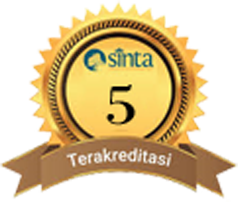PENGGUNAAN METODE NUMBERED HEAD TOGETHER (NHT) DAPAT MENINGKATKAN HASIL BELAJAR MATERI PERSAMAAN KUADRAT PADA SISWA KELAS IX/2 SMP NEGERI 1 BANDAR DUA
DOI:
https://doi.org/10.22373/fitrah.v3i2.1569Keywords:
Model Numbered Head Together (NHT), Learning Outcomes, Quadratic Equation Material.Abstract
Lack of enthusiasm, lack of activity, less student-centred class, and sometimes people playing alone in class, are problems faced by SMP Negeri 1 Bandar Dua, Pidie Jaya Regency, especially for mathematics for grade IX students. /2, The bad impact is their mastery of concepts and their learning completeness is 60% . This condition is certainly not expected in the teaching and learning process. This research was carried out in the form of Classroom Action Research (CAR) at the junior high school level, which was carried out at SMP Negeri 1 Bandar Dua. The purpose of this study was to improve learning outcomes for the Quadratic Equation Material in Class IX/2 SMP Negeri 1 Bandar Dua. The results showed that: 1. Mathematics learning by integrating quizzes into the numbered-head-together cooperative learning model can increase student activity in groups, do assignments, think together, and answer quizzes. 2. Mathematics learning by integrating quizzes into the numbered-head-together cooperative learning model can improve student learning outcomes for class IX/2 SMP Negeri 1 Bandar Dua, Pidie Jaya Regency. 3. Student response to mathematics learning that integrates quizzes into the numbered-head-together cooperative learning model is positive.
Downloads
Published
How to Cite
Issue
Section
License
Authors who publish in this journal agree to the following terms:
- Authors retain copyright and grant the journal right of first publication with the work simultaneously licensed Attribution-NonCommercial-ShareAlike 4.0 International (CC BY-NC-SA 4.0) that allows others to share the work with an acknowledgment of the work's authorship and initial publication in this journal.
- Authors can enter into separate, additional contractual arrangements for the non-exclusive distribution of the journal's published version of the work (e.g., post it to an institutional repository or publish it in a book), with an acknowledgment of its initial publication in this journal.
- Authors are permitted and encouraged to post their work online (e.g., in institutional repositories or on their website) before and during the submission process, as it can lead to productive exchanges and earlier and greater citation of published work. (See The Effect of Open Acces)









